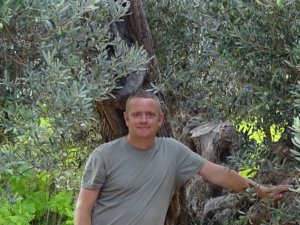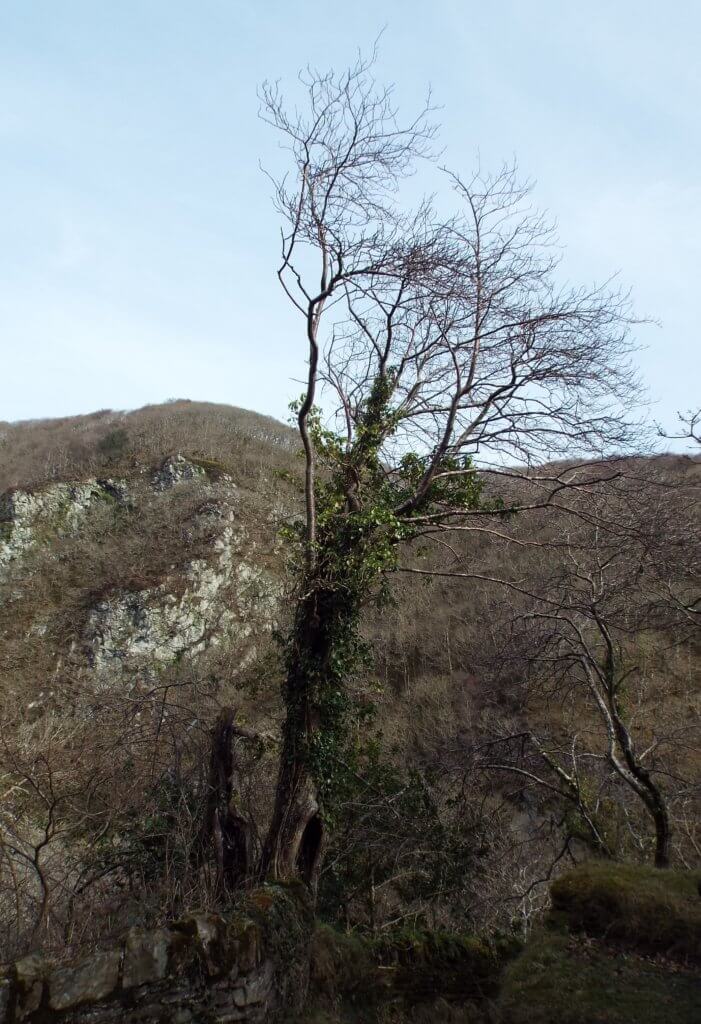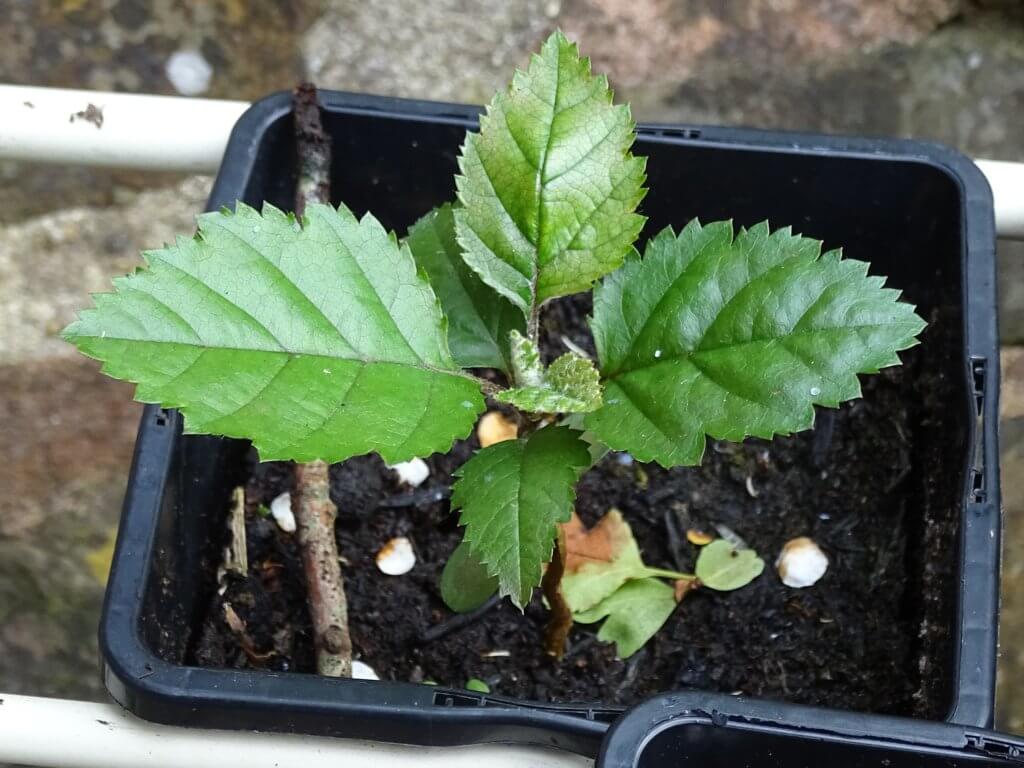 Ian Parsons spent twenty years working as a Ranger with the Forestry Commission, where he not only worked with birds of prey and dormice, but where he developed his passion for trees. Now a freelance writer, Ian runs his own specialist bird tour company leading tours to Extremadura. For more details see www.griffonholidays.com
Ian Parsons spent twenty years working as a Ranger with the Forestry Commission, where he not only worked with birds of prey and dormice, but where he developed his passion for trees. Now a freelance writer, Ian runs his own specialist bird tour company leading tours to Extremadura. For more details see www.griffonholidays.com
This is Ian’s tenth Guest Blog here and you can access all the others through the Guest Blog Archive – click here.
Ian’s book, A Tree Miscellany, was reviewed here.
Whitebeam Spring
My first guest blog on this site was about trees, it was a bit of a moan about how we (including very good naturalists) don’t look at trees as often as we should, basically it was about being treeblind – not recognising trees as different species when we see them and just referring to them in the generic sense. In this blog I am returning to the theme…
Trees are brilliant things, most of us know this, but very few of us actually know our trees as we know our wild flowers or birds or butterflies etc. etc. Spring is coming though, and with it comes a great opportunity to stop being treeblind and to get to know your trees. Some of you might be living close to some very special ones indeed.
When it comes to large organisms, Britain doesn’t have much in the way of endemic species. But we have several trees that are endemic, trees that are found nowhere else on the planet. So, make it your mission this spring to get out there and see some of our unique trees for yourselves, enjoy them and get to know them.
The following is a list of some of our endemic species and the areas in which they are found, all you have to do is head out and find them and while you are at it you have a great opportunity to get to know many other species of far commoner trees too!

No Parking Whitebeam (Sorbus admonitor ) – probably the best named tree in the world and a personal favourite of mine, this tree is only found in Exmoor national Park in North Devon, specifically in the East Lyn valley.
English Whitebeam (Sorbus anglica) – found on Exmoor again, in North Devon and Somerset, as well as near Torquay in south Devon. It is also found in the Mendip Hills and in the Avon Gorge in Bristol as well as along the Welsh/English border in the Wye valley and further north near Shrewsbury. It is also found in Ebbw Vale and the Elan Valley in Wales. It is also, despite its name, found near Killarney in County Kerry, Ireland.
Arran Whitebeam (Sorbus arranensis) – found as the name suggests only on the Isle of Arran, in the northern half of the island.
Bristol Gorge Whitebeam (Sorbus bristoliensis) – again the clue is in the name, found along the Avon Gorge in Bristol, including within the NNR Leigh Woods.
Welsh Whitebeam (Sorbus cambrensis) – found in two isolated pockets to the east and north of Ebbw Vale in Wales.
Cheddar Whitebeam (Sorbus cheddarensis) – found as the name suggests in Cheddar Gorge, Somerset.
Llangollen Whitebeam (Sorbus cuneifolia) – found in two small nucleuses, the main area being west of Wrexham in Wales and the other, with just two trees known, to the south west of Oswestry in Shropshire.
Devon Whitebeam (Sorbus devoniensis) – found not only as the name suggests in Devon, where it mainly occurs in the north western half of the county and around Teignmouth (and in my garden!), but also in north west Somerset and in southern Ireland in an area extending from the coast to the south of Waterford before following the river Barrow north to Graiguenamanagh.
Round-leaved Whitebeam (Sorbus eminens) – found in the Mendip Hills in Somerset, both in Cheddar Gorge and near Langford as well as being found in nearby Weston Super Mare, Worle, Portishead and Clevedon. It is also found in the Avon Gorge in Bristol (again in Leigh Woods)and then across the Severn in the Wye valley and in Wales between the two Severn crossings, as well as a small outlier on the eastern edge of Cardiff.
Doward Whitebeam (Sorbus eminentiformis) – found in two populations in the Wye valley, one just to the north of Chepstow and the other around the NNR of Lady Park Wood and the Symond’s Yat area.
Two Cliffs Whitebeam (Sorbus eminentoides) – found at the entrance to Cheddar Gorge in Somerset, growing on just two cliffs apparently! There are only about 20 specimens.
Irish Whitebeam (Sorbus hibernica) – found in pockets throughout the island of Ireland including in Northern Ireland.
Lancashire Whitebeam (Sorbus lancastriensis) – found in Lancashire of course but also in Cumbria, specifically around the north of Morecambe Bay, extending up to Kendal in the north and to Barrow in Furness in the west.
Leigh Woods Whitebeam (Sorbus leighensis – found in the Avon Gorge in Bristol, specifically in Leigh Woods NNR.
Thin-leaved Whitebeam (Sorbus leptophylla) – found in two sites in Breconshire, Wales, one to the north of Ebbw Vale and the other around the small village of Penwyllt.
Ley’s Whitebeam (Sorbus leyana) – found in Penmoelallt Forest Nature Reserve in Breconshire, Wales, there are only 11 specimens.
Margaret’s Whitebeam (Sorbus margaretae) – found on the Exmoor coast of North Devon and Somerset in two separate areas, the first running from Combe Martin to Lynton and the second running from Countisbury to Porlock Weir.
Least Whitebeam (Sorbus minima) – found in the Brecon Beacons National Park in Wales on the hills to the south of Llangattock.
Ship Rock Whitebeam (Sorbus parviloba) – found in the Coldwell Rocks area around Symond’s Yat in the Wye Valley, there is only one known specimen.
Grey-leaved Whitebeam (Sorbus porrigentiformis) – found in scattered pockets in south Wales and south west England, with populations around Torquay and Newton Abbot in Devon as well as around Lynton in the north of the county. It is also found in the Mendip Hills around Cheddar gorge and around Weston Super Mare, Worle, Clevedon and the Avon Gorge in Bristol. North of the Severn it is found in the Wye Valley, across a large sweep between Merthyr Tydfil and Brecon, on the north edge of Cardiff and on the Gower Peninsula, Swansea.
Arran Service Tree (Sorbus psuedofennica) – found in the northern half of the Isle of Arran.
Catacol Whitebeam (Sorbus psuedomeinichii) – found again on the Isle of Arran, unlike the other two species which occur in good number on the island, there is just one specimen still found alive in the Glen Catacol area in the north of the island.
Gough’s Rock Whitebeam (Sorbus rupicoloides) – found in one location at the entrance to Cheddar Gorge in Somerset, there are only 17 individuals known.
Symond’s Yat Whitebeam (Sorbus saxicola) – found in the Symond’s Yat area of the Wye valley in the Forest of Dean, there are only 40 known examples.
Llanthony Whitebeam (Sorbus stenophylla) – found in the Llanthony valley in south Wales.
Stirton’s Whitebeam (Sorbus stirtoniana) – found in Craig Breidden in Easte Wales, there are only 20 or so known individuals.
Somerset Whitebeam (Sorbus subcuneata) – found in Exmoor National Park on the north Devon and Somerset coast, specifically in three areas between Combe Martin and Minehead.
Bloody Whitebeam (Sorbus vexans) – found in Exmoor National Park on the north Devon and Somerset coast between Combe Martin and Porlock Weir. There are only 35 specimens known.
White’s Whitebeam (Sorbus whiteana) – found in the Avon Gorge in Bristol and in the Wye valley, there are less than 50 specimens.
Wilmott’s Whitebeam (Sorbus wilmottiana) – found in the Avon Gorge in Bristol again. There are less than 60 known specimens.
So there you go, a fair few species to get to know and all of them very special indeed. I am well aware that they have a very westerly distribution and that many of you reading this don’t, but how far would you go to see an endemic bird, butterfly or orchid? Even if you don’t get out and find one of our endemic Whitebeams, why not use the coming spring to get out and learn some trees you don’t know, try finding the diminutive Wayfaring Tree or a beautiful Spindle and have a good look at our commoner species so you can tell them apart from others, learn to separate your Pendunculate from your Sessile Oak or your Downy from your Silver Birch or if you want to give your grey matter a bit more of a workout, try getting your head around the Willows!
Britain is full of brilliant trees, some are found nowhere else in the world, all are worth getting to know. Don’t be Treeblind!

The trouble is most of us wouldn’t know where to start with these whitebeam species and would have no real hope of being able to identify them. I’m sure there are good reasons why they have all been given species status, even if there are only a handful of trees, but it seems very odd from a non-specialist point of view and makes it harder to get too excited about them – its a bit like all the blackberry ‘species’ I guess. I’ve just about got my head around downy and silver birch in the last year following your original blog on the subject so that’s something.
I think I’m with Ian C on this one. These are polyploid hybrid apomictic plants and as with dandelions and brambles there is a distinct element of the more you look the more “species” you can find. Identifying them in the field with any certainty is probably not possible. That’s not to say that they are not biologically interesting and of course I’m sure we should expend some effort conserving them. If I was to be really provocative I might suggest that some people would argue that there are higher conservation priorities for our limited cash though.
However I do agree with Ian P that we should all get out more and appreciate all of our native trees which can be wonderfully life-enhancing.
Having just had to fell a Scots Pine and a Noble Fir due to ‘the beast from the east’! [And a Eucalyptus now looks dodgy!] trees are very much the best things on the planet. Given that I am into ‘bird trees’ – trees growing on other trees due to birds dispersing their seeds your Whitebeam could come into that category as Rowan/Mountain Ash are very much the commonest of these species found growing in/on other trees. Would you know if any of your rare Whitebeam are actually ‘bird trees’?
Thanks for another stimulating blog Ian, Lancashire Whitebeam being the only one that I have knowingly encountered. A timely reminder to us all.
Do you know if anything is being done to propagate these rare species in order to maintain their presence in the wild?
Talking about trees. We have recently moved to a house with a young variegated Acer in the middle of the lawn. We hung a peanut feeder on one branch which attracted Grt. Sp. woodpeckers. One day we noticed one of the birds pecking at the bark of this tree and on approaching saw streams of sap running down from a line of small holes. Really pouring out and dripping off branches. I tasted some of the sap and it was faintly sweet. Are the woodpeckers after the sugar in the sap? As in sugar maples in Canada? There is plenty of water to drink round here so I don’t think that was what they were after. We are in North Lancashire. Perhaps we will swap the tree for a Lancashire Whitebeam!
Whitebeams clearly throw up new ‘species’ quite readily – and in the plant world generally speciation is a lot less firm than most birders might realise. However, I think this links across to birds – we’re obsessed with hard species because you have to have a species to get a tick. I was involved in ringing 100s of redpolls on Varangerfjord in northern Norway. They were theoretically ‘lesser’ and ‘arctic’ and there certainly were good type examples at each end of the spectrum – but despite poring over Svensson, there were birds in the middle that could have gone either way and there was absolutely no dividing line through the range where you could really say arctic stopped and lesser began.
This blog’s intention is to get you looking at trees more, rather than entering a debate about speciation (Scottish Crossbill anyone?), I appreciate that Whitebeams are complicated, but the IUCN lists all the above as individual species.
Ian C – glad to hear that you have tackled the Birches, it always amazed me when working for the FC how many ‘tree people’ didn’t know the difference between these two beautiful native species. By looking at trees more closely you can see so much more.
John – I am not aware of any, but as you say they are highly likely indeed – have you heard of the Bialbero de Casorzo in Italy? Well worth a look up!
Mike – Propagate them yourself! Pick a handful of their fruits in October and sow them in small pots, if the Lancastrian is like the Devon it should germinate easily – my garden in Devon has pots and pots of young Devons!
Carole – Yes! You often see these marks on youngish growth high up on Oak trees too.
Rod – Absolutely, as I said, Scottish Crossbill…
I wonder if the woodpeckers could have been picking off ant which, in turn, may have been feeding on the sugary sap?